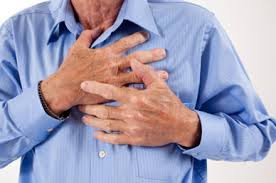Angina pectoris is the sensation of chest pain, pressure, or squeezing, often due to ischemia of the heart muscle from obstruction or spasm of the coronary arteries.
Angina pectoris is the medical term for chest pain or discomfort due to coronary heart disease. It occurs when the heart muscle doesn't get as much blood as it needs. This usually happens because one or more of the heart's arteries is narrowed or blocked, also called ischemia.
Angina often occurs when the heart muscle itself needs more blood than it is getting, for example, during times of physical activity or strong emotions. Severely narrowed arteries may allow enough blood to reach the heart when the demand for oxygen is low, such as when you're sitting. But, with physical exertion—like walking up a hill or climbing stairs—the heart works harder and needs more oxygen.
Nursing Diagnosis and Nursing Intervention for Angina Pectoris
Nursing Intervention for Angina Pectoris
Angina pectoris is the medical term for chest pain or discomfort due to coronary heart disease. It occurs when the heart muscle doesn't get as much blood as it needs. This usually happens because one or more of the heart's arteries is narrowed or blocked, also called ischemia.
Angina often occurs when the heart muscle itself needs more blood than it is getting, for example, during times of physical activity or strong emotions. Severely narrowed arteries may allow enough blood to reach the heart when the demand for oxygen is low, such as when you're sitting. But, with physical exertion—like walking up a hill or climbing stairs—the heart works harder and needs more oxygen.
Nursing Diagnosis and Nursing Intervention for Angina Pectoris
Decreased Cardiac Output
Related to
- Inotropic changes, such as transient or prolonged myocardial ischemia and effects of medications;
- alterations in rate, rhythm, and electrical conduction.
- Cardiac Pump Effectiveness
- Demonstrate increased activity tolerance.
- Report or display decreased episodes of dyspnea, angina, and dysrhythmias.
- Participate in behaviors and activities that reduce the workload of the heart.
Nursing Intervention for Angina Pectoris
- Monitor vital signs, eg heart rate, blood pressure.
Rationale: Tachycardia can occur because of pain, anxiety, hypoxemia, and decreased cardiac output. Changes also occur in blood pressure (hypertension or hypotension) due to cardiovascular response. - Record the color and the presence / quality of the pulse.
Rationale: decreased peripheral circulation when cardiac output falls, making skin color pale or gray (depending on the level of hypoxia) and decreased strength of peripheral pulses. - Maintain bed rest in a comfortable position during the acute episode.
Rationale: Lowering the oxygen consumption / demand, lowering employment and risk of myocardial decompensation. - Provide supplemental oxygen as needed
Rationale: Increase the supply of oxygen to the need to improve myocardial contractility, decrease ischemia, and lactic acid levels.

